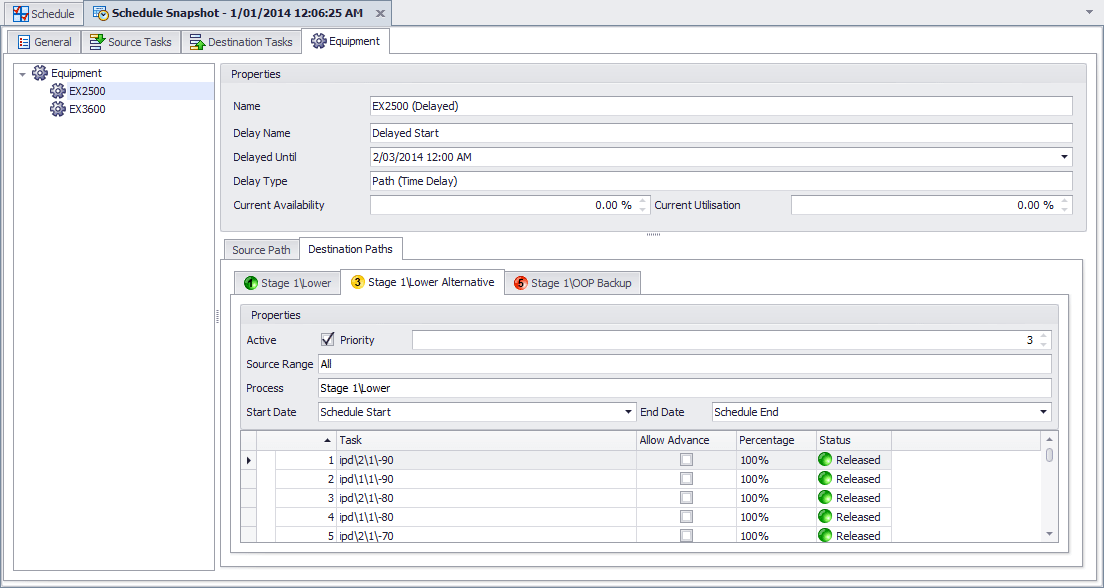Priorities
In Source Scheduling, each Source Path represents an individual piece of Equipment with an ordered, single set of instructions. One major way in which Destination Paths differ is that they can technically overlap, so at any one point in time you might have multiple instructions for the one piece of Equipment. When a line of your Output Schedule has more than one Destination Path Filter that applies, the Priority takes over.
Why is that useful? Let's say your preference is to dump in pit. The way in which the in-pit dump is completed occurs in a certain order (In Pit Path #1). But what happens when you run out of space either with a dependency or constraint? Your backup dump is out of pit and is built up in it's own way. You could add the path for the out of pit dump to the end of In Pit Path #1, but by adding it as a lower priority path (Out Of Pit Path #1) you can compartmentalise the work. It means that for In Pit Paths #2, #3, #4 etc you don't have to replicate your out of pit path.

Each line of the schedule as it is filtered for a Destination Path may have more than one possible option. The options are taken in order of priority. If no task in the first Priority is available, the next Priority down will be tested, etc. See the screenshot below for an example.

Expands Upon
Destination Scheduling adds Destination Tasks to the Snapshot Viewer.